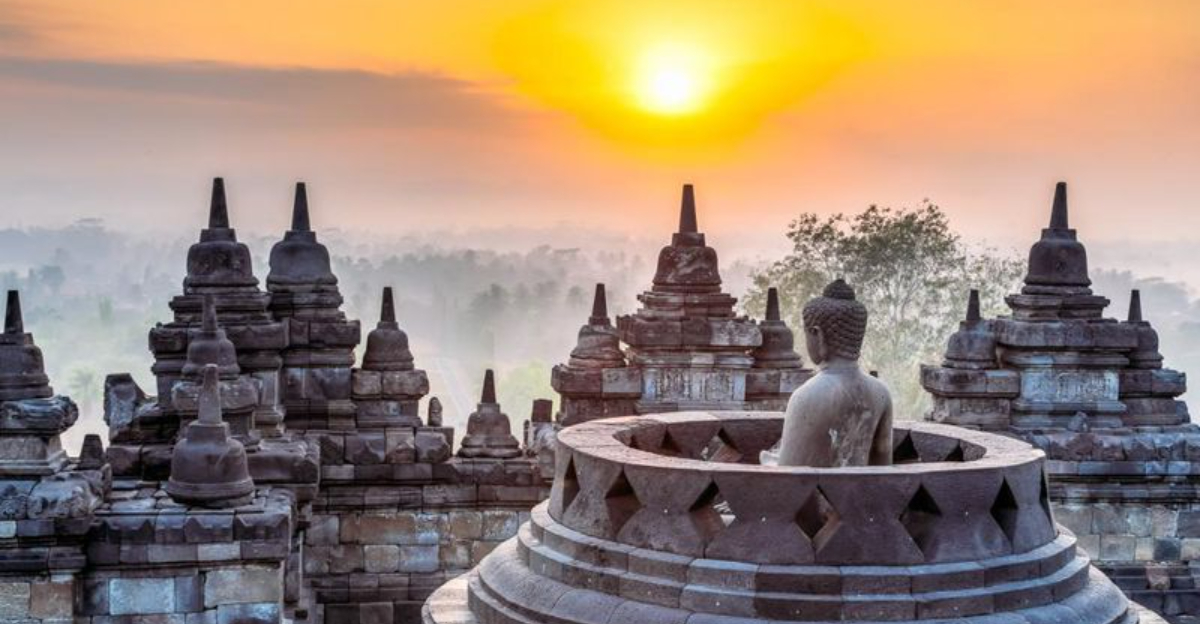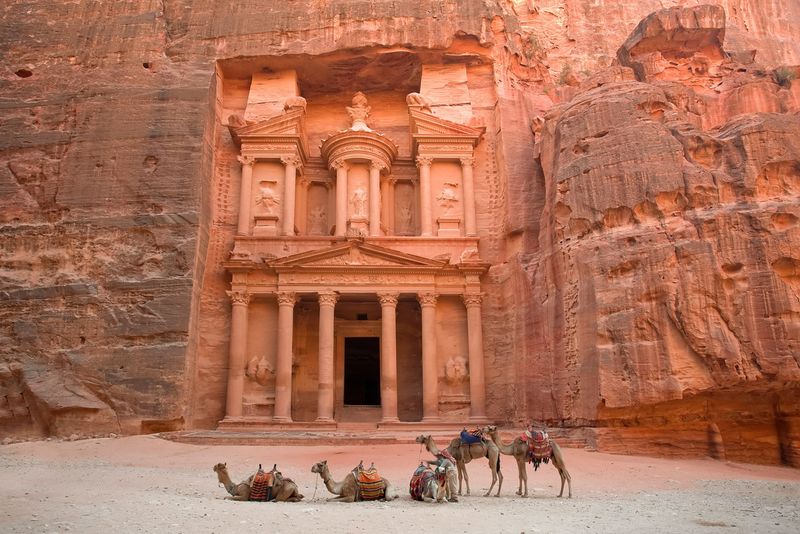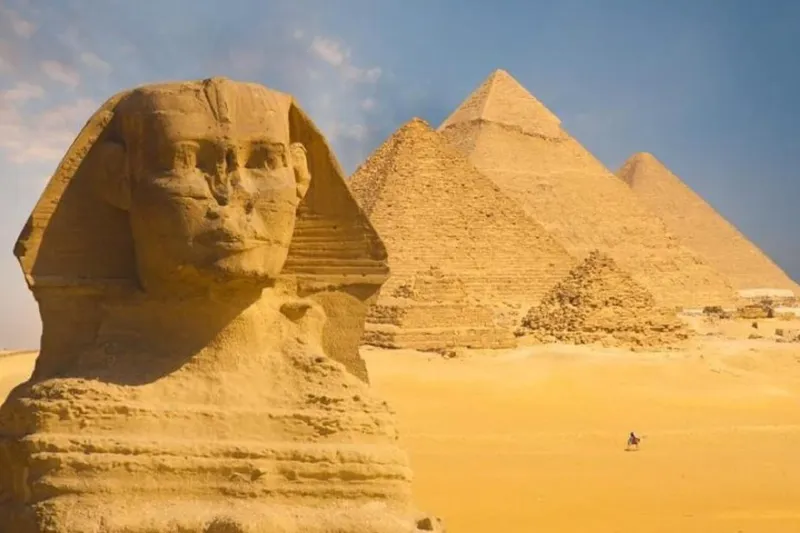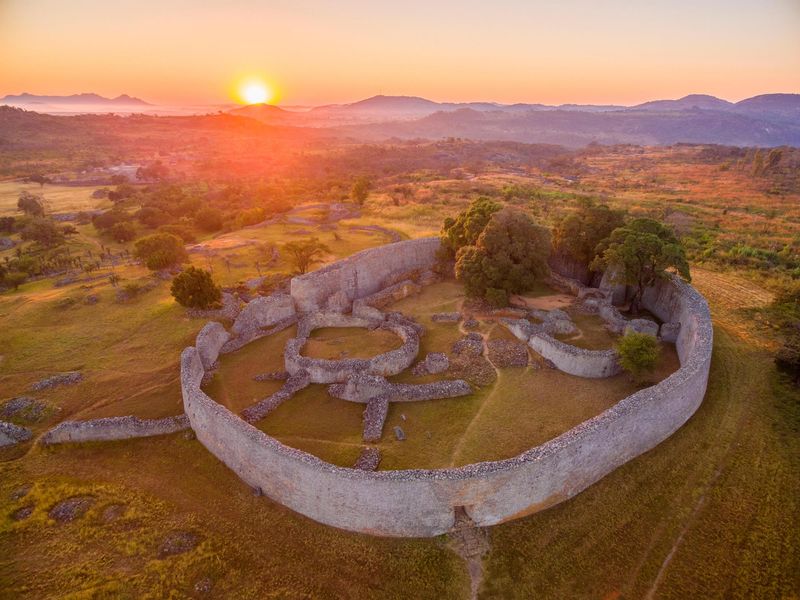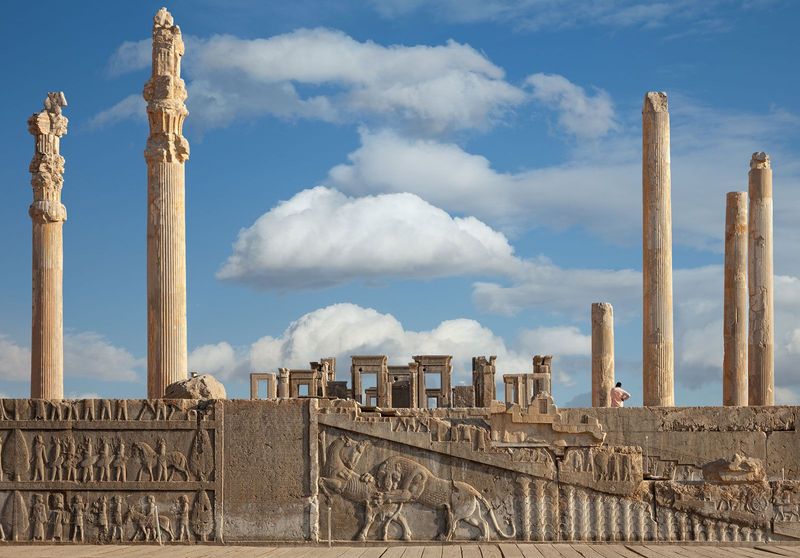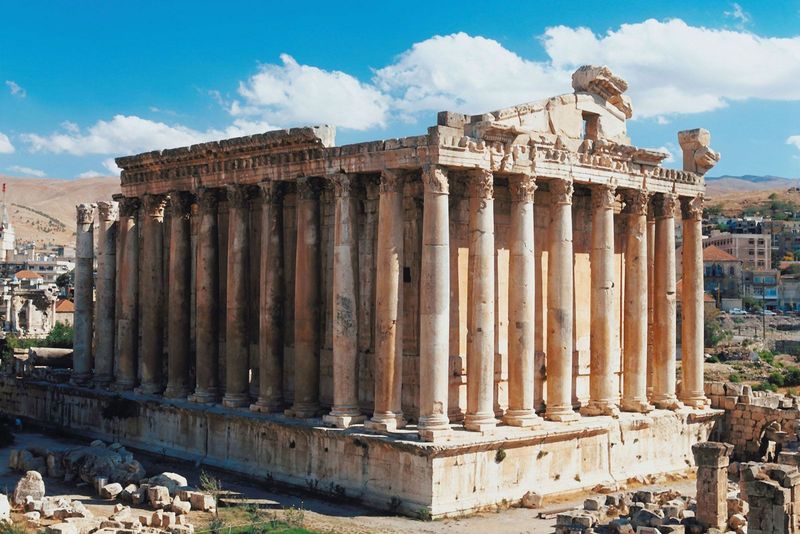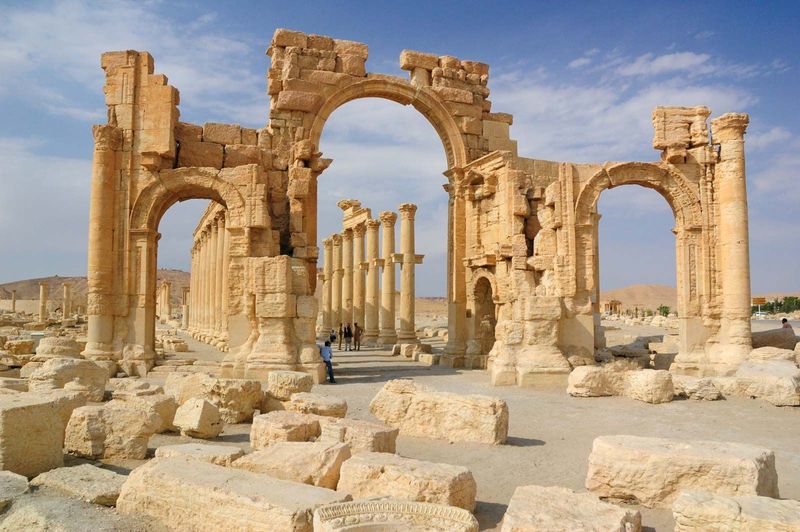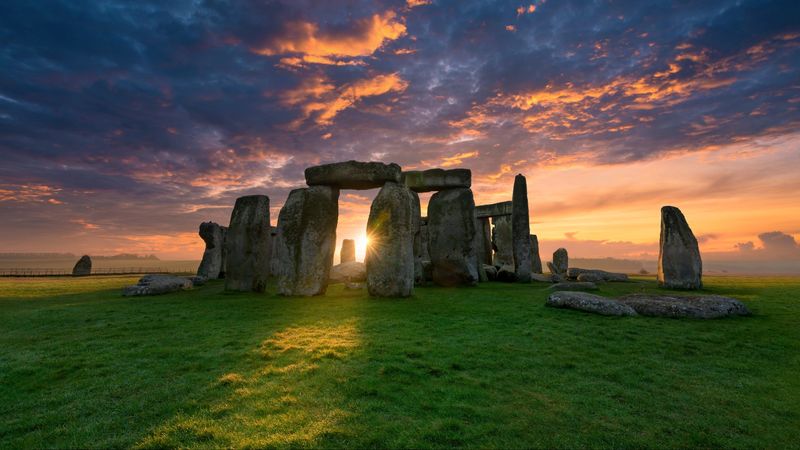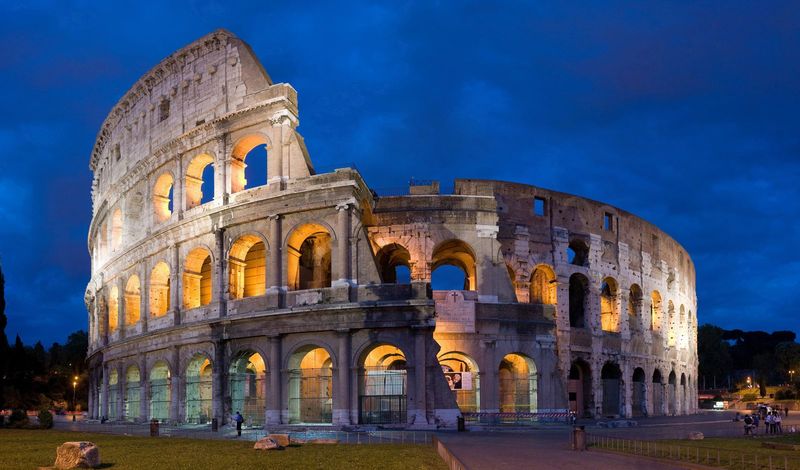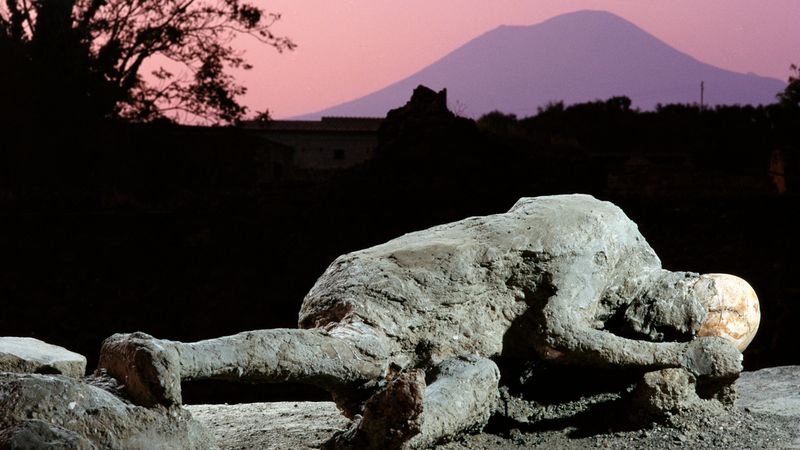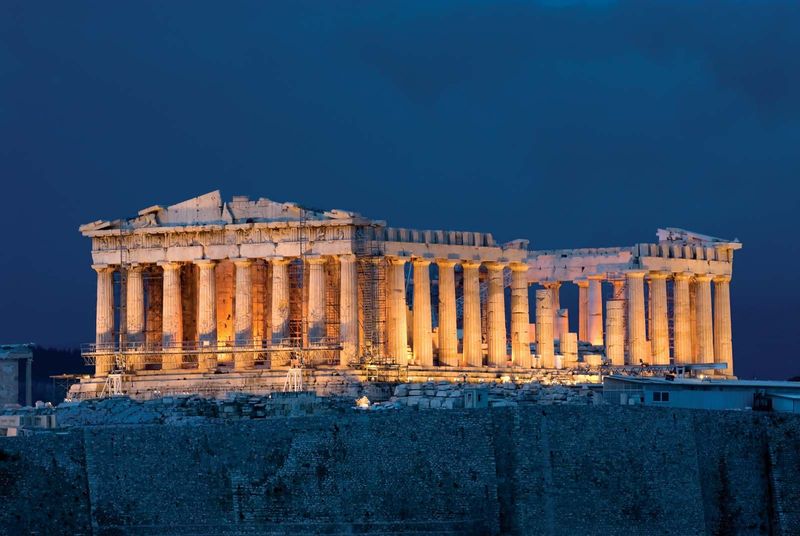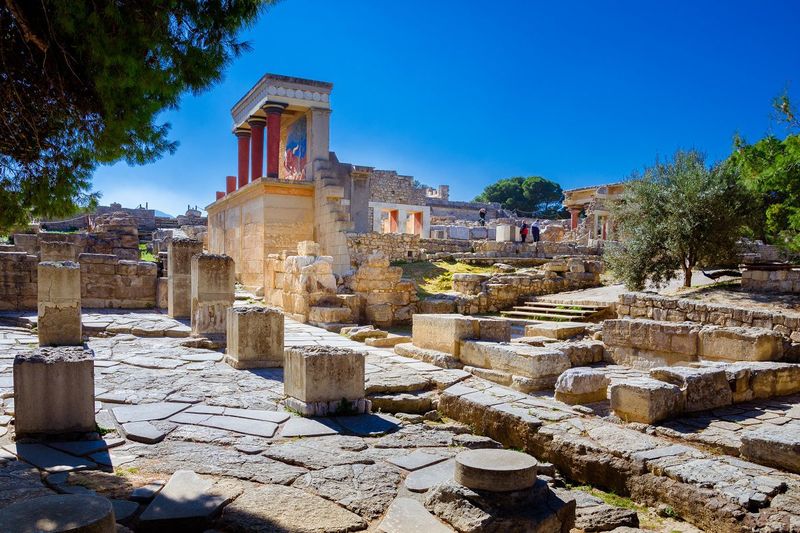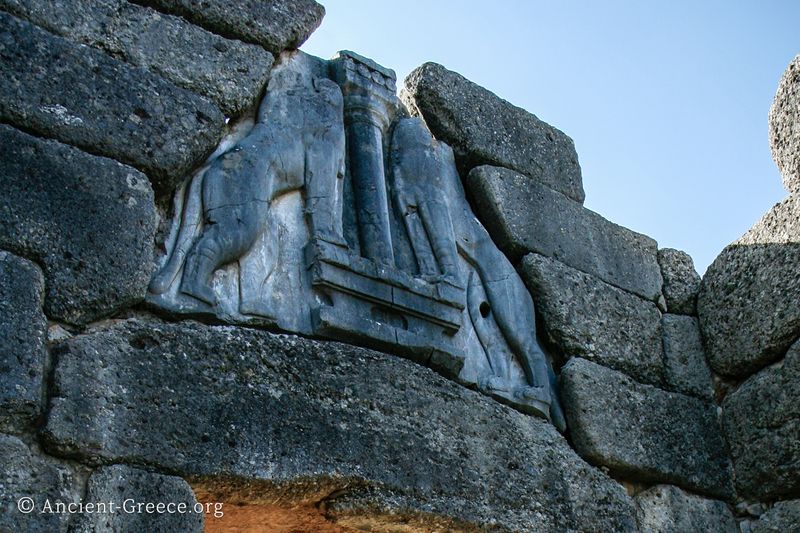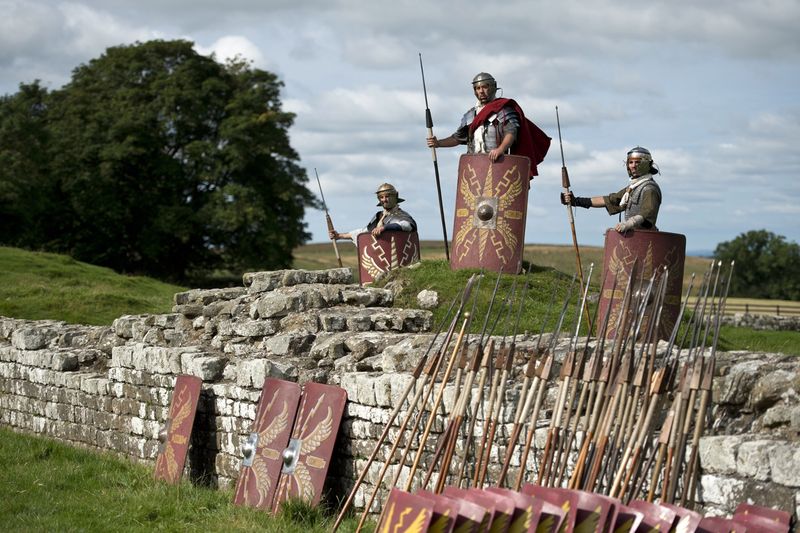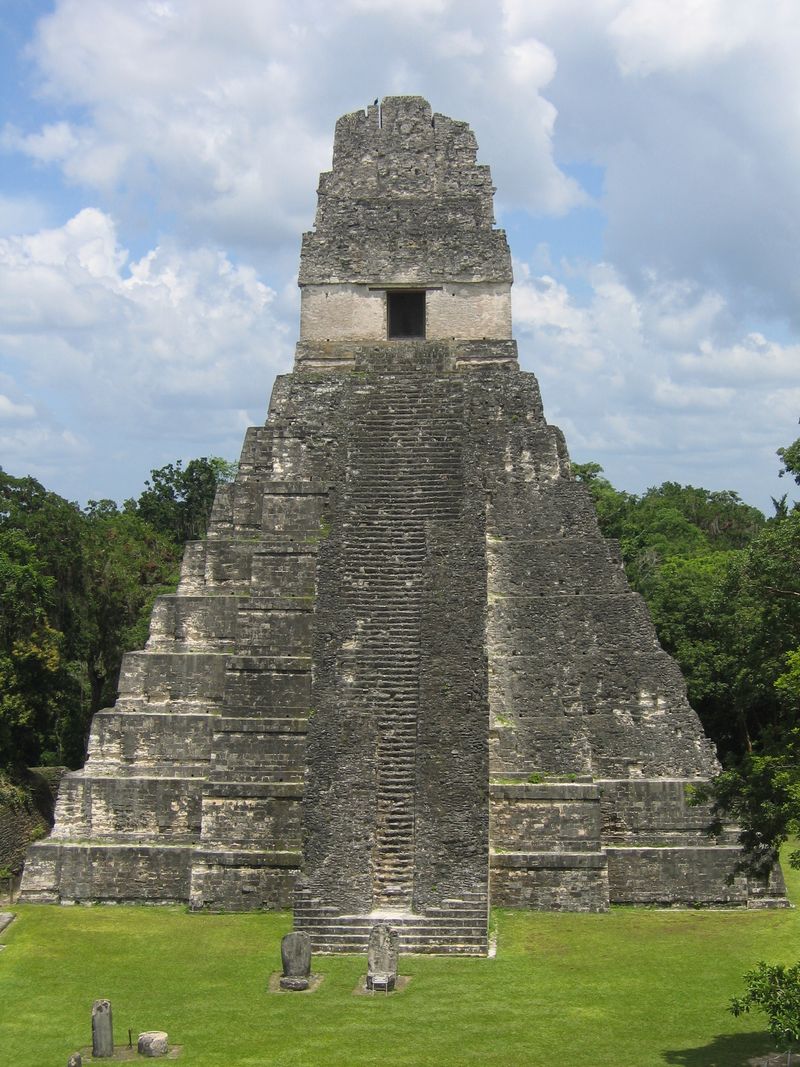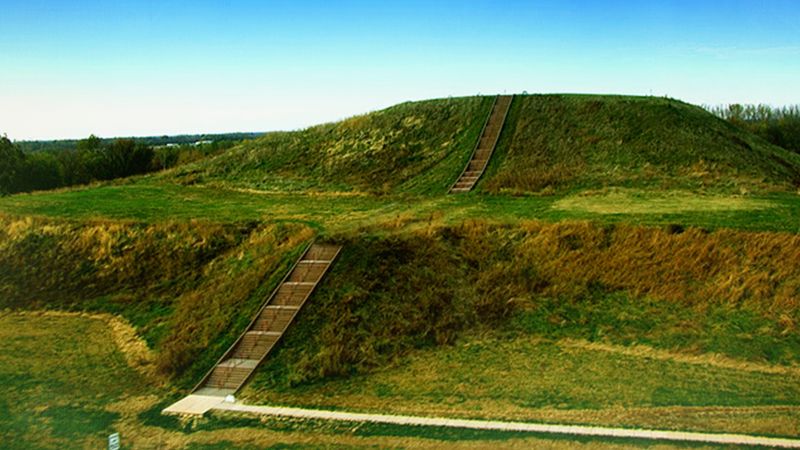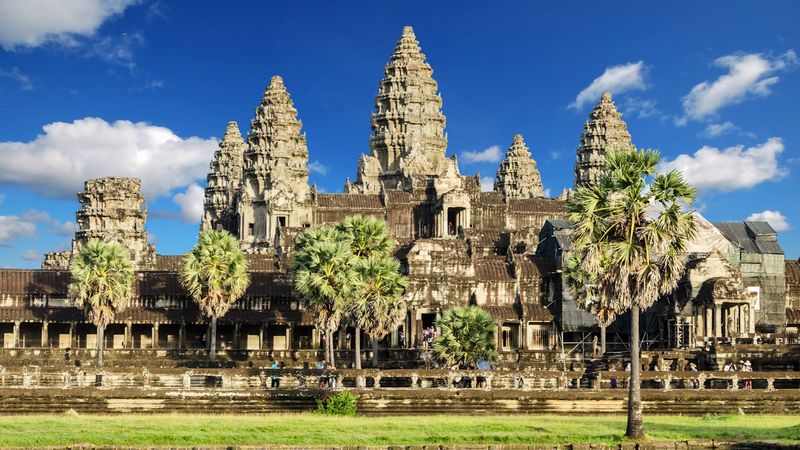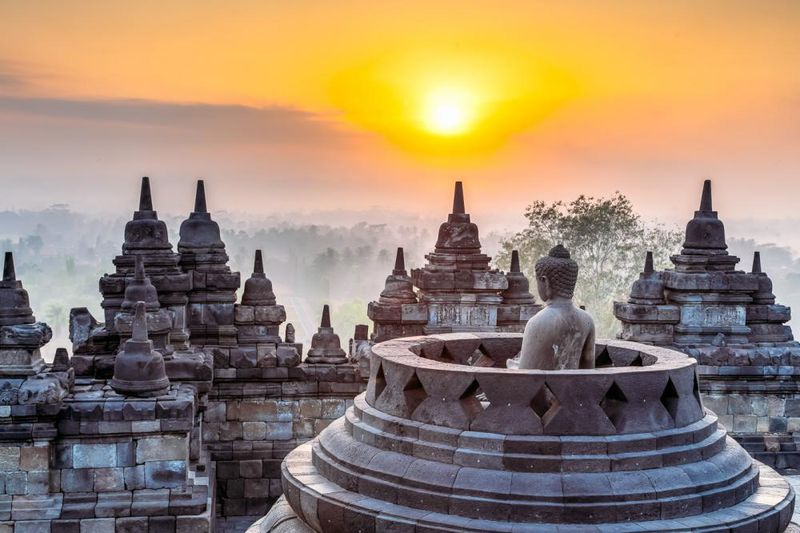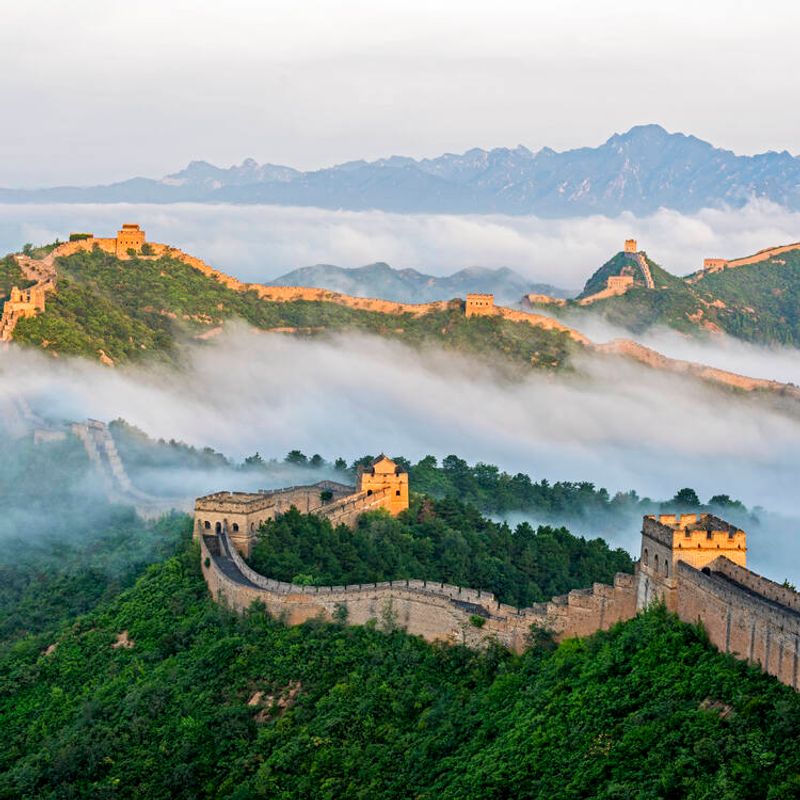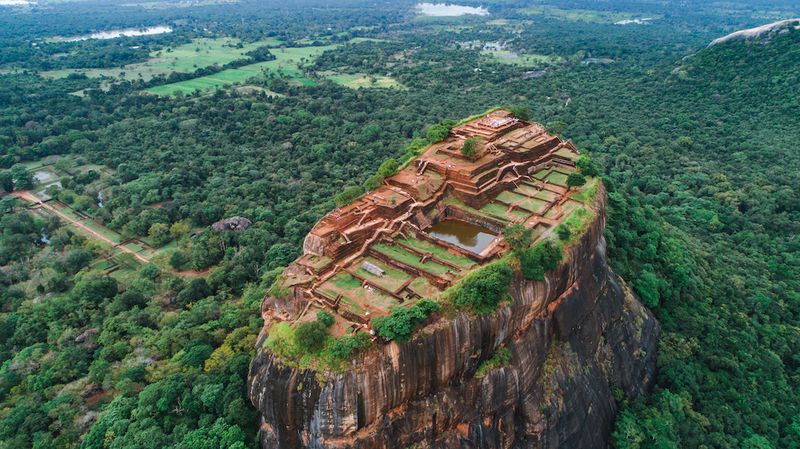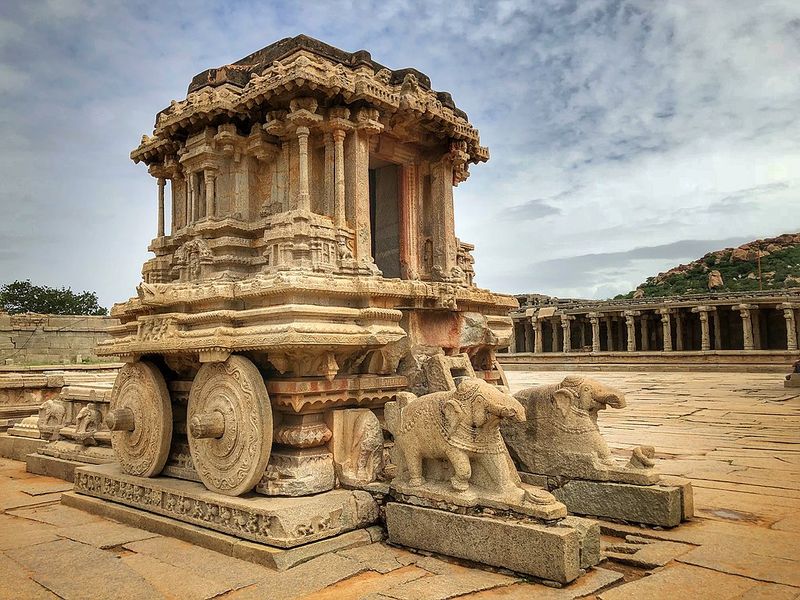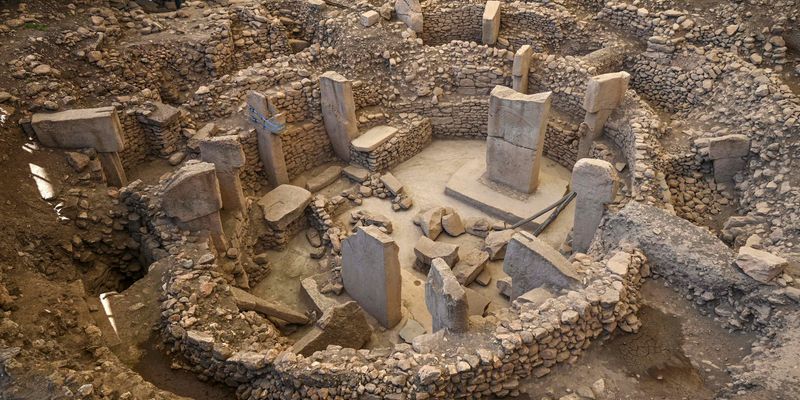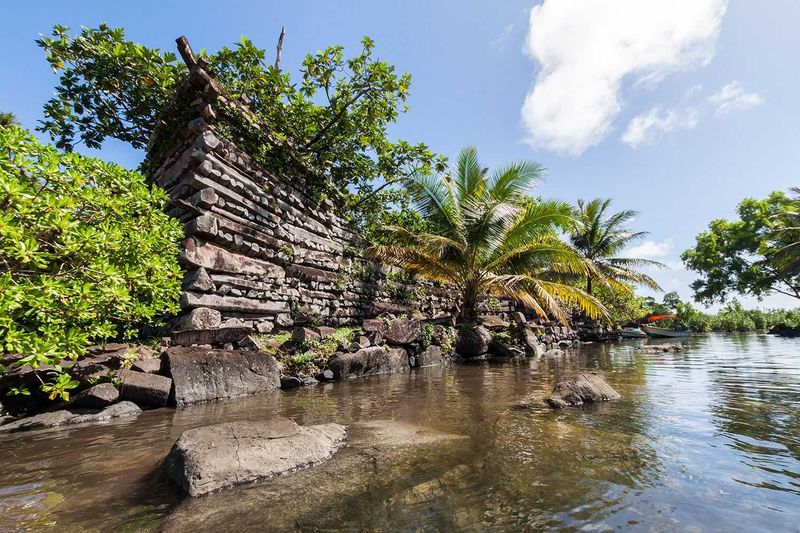Explore the world’s most breathtaking ancient ruins that continue to captivate travelers with their timeless beauty and historical significance. These ruins offer a glimpse into the fascinating civilizations that shaped our world, showcasing an array of architectural marvels, cultural richness, and intriguing mysteries. From the deserts of Jordan to the jungles of Guatemala, each site holds its unique story, inviting adventurers to wander through history and discover the wonders of our past.
1. Petra, Jordan – The “Rose City” carved into pink sandstone cliffs by the Nabataeans
In the heart of Jordan’s arid landscape lies Petra, the enchanting “Rose City.” This ancient marvel, sculpted by the Nabataeans, reveals stunning architecture etched into pink sandstone cliffs. The journey begins with a walk through the narrow Siq, a natural gorge, unveiling the iconic Treasury.
Petra’s allure extends beyond its rock-cut facades. As the sun sets, the city glows in a warm rose hue, casting an unforgettable spell. Archaeologists marvel at Petra’s advanced hydraulic engineering that sustained life here.
Did you know? Despite its desert location, Petra thrived as a vital trade hub, connecting East and West.
2. Pyramids of Giza, Egypt – The last surviving Wonder of the Ancient World
Even in a world brimming with modern marvels, the Pyramids of Giza stand unmatched. These ancient tombs, constructed for pharaohs, continue to baffle engineers with their precision and scale. At the heart of this trio is the Great Pyramid, the only surviving Wonder of the Ancient World.
The Sphinx, with its enigmatic expression, guards the pyramids, adding an aura of mystery. Imagine the toil of thousands who shaped this landscape, a testament to human achievement.
Fun fact: The Great Pyramid was originally covered in gleaming casing stones, reflecting sunlight like a beacon.
3. Great Zimbabwe, Zimbabwe – Massive stone ruins of a medieval African kingdom
Nestled in southern Africa, Great Zimbabwe is a testament to a once-thriving empire. Its colossal stone walls and towers, constructed without mortar, showcase exceptional craftsmanship and ingenuity. The Great Enclosure, a prominent feature, stands as a symbol of power and prestige.
This site echoes the stories of a kingdom that controlled trade routes across Africa. Its ruins whisper tales of gold, ivory, and a vibrant culture that flourished here.
Did you know? The name “Zimbabwe” means “house of stone,” aptly reflecting the country’s rich heritage rooted in these ruins.
4. Persepolis, Iran – Ceremonial capital of the Persian Empire
Persepolis, the ceremonial capital of the Persian Empire, stands as a monument to ancient Persian grandeur. Its grand stone columns and intricate carvings tell tales of rich traditions and imperial power. Built by Darius the Great, this site was a ceremonial hub for grand celebrations.
The Apadana Palace, with its majestic staircases, invites travelers to imagine the splendor of imperial gatherings. Alexander the Great’s conquest left it in ruins, yet its magnificence endures.
Fun fact: Persepolis was once adorned with gleaming gold and silver, reflecting the empire’s wealth.
5. Baalbek, Lebanon – Roman temple complex with the largest stone blocks ever used
Amidst Lebanon’s picturesque landscape lies Baalbek, home to one of the Roman Empire’s most impressive temple complexes. Known for its massive stone blocks, some weighing over a thousand tons, it remains an engineering marvel.
The Temple of Bacchus, remarkably preserved, draws visitors with its ornate carvings and towering columns. These ancient structures echo the grandeur of Rome in the East.
Did you know? The sheer size of Baalbek’s stones puzzled engineers for centuries, leading to myths about their origins and purpose.
6. Ephesus, Turkey – Best-preserved classical city in the Eastern Mediterranean
Ephesus, a jewel of the Eastern Mediterranean, offers a glimpse into ancient Roman life. Its marble streets lead to the stunning Library of Celsus, a testament to architectural brilliance. Visitors tread where philosophers, merchants, and emperors once walked.
The Great Theatre, capable of seating thousands, still hosts performances, bridging ancient and modern worlds. As the sun sets, the city basks in a golden glow.
Fun fact: Ephesus was once home to the Temple of Artemis, one of the Seven Wonders of the Ancient World.
7. Palmyra, Syria – Stunning desert oasis ruins before war damage
Palmyra, once a vibrant desert oasis, thrived as a crossroad of cultures. Its iconic colonnade, stretching into the horizon, stands amidst the golden sands, embodying the city’s grandeur. The blend of Greco-Roman, Persian, and local influences is evident in its architecture.
War has scarred this UNESCO World Heritage Site, yet its timeless beauty endures in the hearts of those who remember it. Palmyra’s resilience mirrors the spirit of its people.
Did you know? Queen Zenobia, a legendary ruler, once challenged the might of Rome from Palmyra.
8. Luxor Temple, Egypt – Ancient Theban capital with colossal statues
Luxor Temple, a magnificent relic of ancient Thebes, stands on the east bank of the Nile. Its colossal statues of pharaohs and grand colonnades speak volumes of a glorious past. This temple was a center of worship and royal processions.
The Avenue of Sphinxes, once stretching to Karnak Temple, evokes the grandeur of ancient ceremonies. As night falls, Luxor Temple glows with enchanting light.
Fun fact: Luxor Temple was connected to Karnak by an avenue lined with sphinxes, reflecting its importance in the Theban capital.
9. Stonehenge, England – Prehistoric megalithic mystery
Stonehenge, a prehistoric enigma, stands on England’s Salisbury Plain. This circle of massive stones, aligned with celestial events, invites speculation about its purpose. Was it an astronomical calendar, a religious site, or something else entirely?
As dawn breaks on the solstices, light dances between the stones, deepening its mystery. Stonehenge remains a symbol of ancient ingenuity and cosmic curiosity.
Did you know? Some stones were transported over 150 miles, showcasing remarkable prehistoric determination.
10. Colosseum, Italy – Iconic Roman gladiatorial arena
In the heart of Rome stands the Colosseum, an enduring symbol of ancient might. This grand amphitheater once hosted gladiatorial contests and public spectacles, drawing crowds of up to 50,000 spectators.
Its elliptical structure, a marvel of Roman engineering, speaks of an empire’s love for entertainment and power. Today, the Colosseum continues to captivate millions with its iconic silhouette.
Fun fact: The Colosseum featured a retractable awning system called the “velarium” to shield spectators from the sun.
11. Pompeii, Italy – Roman city frozen in time by volcanic ash
Pompeii, a city frozen in time, offers a poignant snapshot of Roman life. In AD 79, Mount Vesuvius erupted, burying the city under layers of ash. Today, its streets, homes, and artifacts remain remarkably preserved.
Wander through the Forum, marvel at intricate mosaics, or stand in amphitheaters where crowds once gathered. Pompeii’s haunting silence speaks volumes.
Did you know? Plaster casts of victims, captured at their final moments, provide a human connection to this ancient tragedy.
12. Acropolis, Greece – Parthenon temple overlooking Athens
High above Athens, the Acropolis commands attention, crowned by the majestic Parthenon. This ancient temple, dedicated to Athena, epitomizes classical Greek architecture and artistry.
Visitors are drawn to its Doric columns and intricate sculptures, symbols of Athenian pride and power. The Acropolis offers panoramic views of the city, blending ancient and modern worlds.
Fun fact: The Parthenon once housed a colossal statue of Athena, adorned with gold and ivory, signifying the goddess’s importance to Athens.
13. Knossos, Crete – Legendary Minoan palace of the Minotaur
Knossos, the heart of Minoan civilization, whispers tales of myths and legends. This sprawling palace complex, adorned with vibrant frescoes, was the backdrop for the tale of the Minotaur and the Labyrinth.
Its architectural ingenuity is evident in complex corridors and advanced plumbing systems. Knossos offers a glimpse into a civilization rich in art and culture.
Did you know? The palace’s design inspired the myth of the Labyrinth, reflecting the Minoans’ fascination with intricate patterns.
14. Mycenae, Greece – Bronze Age citadel of Agamemnon
In the hills of Greece, Mycenae stands as a testament to a mighty Bronze Age civilization. The Lion Gate, with its imposing relief, guards the entrance to what was once the citadel of King Agamemnon.
These ruins, rich in myth, inspired Homeric epics. Treasures unearthed here speak of a society skilled in warfare and artistry.
Fun fact: The mask of Agamemnon, discovered in Mycenae, is a symbol of this legendary king’s enduring legacy.
15. Hadrian’s Wall, UK – Roman Empire’s northern frontier
Hadrian’s Wall, once the northern frontier of the Roman Empire, cuts across the rugged landscapes of northern England. This fortification protected Roman Britain from the wild tribes of the north.
Walking along its remnants, one imagines the soldiers who once stood guard here, enduring harsh climates for their empire. It remains a symbol of Roman engineering and determination.
Did you know? Built under Emperor Hadrian, the wall stretched over 70 miles, showcasing Roman ambition and defensive prowess.
16. Newgrange, Ireland – Older than the pyramids, with celestial alignments
In the heart of Ireland, Newgrange stands as a marvel of prehistoric engineering. This passage tomb, older than the pyramids, aligns with the winter solstice, filling its chamber with golden light.
Intricate carvings adorn its stones, showcasing early artistic expression. Newgrange remains a portal to Ireland’s ancient past, attracting those who seek its mysteries.
Fun fact: During the winter solstice, sunlight illuminates the tomb’s inner chamber, revealing its astronomical significance.
17. Machu Picchu, Peru – Inca mountain citadel in the clouds
Perched high in the Andes, Machu Picchu enchants with its mystical allure. This Inca citadel, shrouded in clouds, offers breathtaking views of its mountainous surroundings. Its stone structures and terraces demonstrate advanced engineering and adaptation.
Rediscovered in 1911, Machu Picchu captivates explorers and historians alike. Each stone narrates stories of Inca innovations and communal life.
Did you know? Machu Picchu was never discovered by Spanish conquerors, preserving its mysteries until the 20th century.
18. Chichen Itza, Mexico – Maya pyramid with acoustic wonders
Chichen Itza, a marvel of Maya ingenuity, captivates visitors with its architectural and acoustic wonders. El Castillo, the iconic pyramid, aligns with the sun, casting serpent-shaped shadows during equinoxes.
The Great Ball Court, with its unique acoustics, amplifies sounds, adding to the site’s mysteries. Chichen Itza reveals a civilization attuned to the cosmos.
Did you know? Clapping near El Castillo produces an echo resembling a bird’s call, showcasing Maya acoustic mastery.
19. Teotihuacan, Mexico – “City of the Gods” with massive pyramids
Teotihuacan, the “City of the Gods,” sprawls across the Mexican landscape, dominated by massive pyramids. The Pyramid of the Sun offers panoramic views, revealing the grandeur of this ancient metropolis.
Avenue of the Dead connects these monumental structures, hinting at a complex society. Teotihuacan remains an archaeological enigma, leaving more questions than answers.
Fun fact: The origins of Teotihuacan’s builders remain unknown, adding to its mystique and allure.
20. Tikal, Guatemala – Classic Maya ruins rising from the jungle
Amidst the Guatemalan jungle, Tikal emerges as a testament to Maya ingenuity. Towering temples rise from the canopy, offering panoramic vistas and glimpses into a vibrant past.
Tikal thrived as a political and cultural hub, its plazas and pyramids bustling with life. The jungle’s embrace has preserved its secrets for centuries.
Did you know? Tikal’s Temple IV, one of the tallest pre-Columbian structures, offers breathtaking views over the rainforest canopy.
21. Tiwanaku, Bolivia – Mysterious pre-Inca site with monolithic gates
Tiwanaku, a pre-Inca enigma, stands in Bolivia’s highlands, shrouded in mystery. The Gate of the Sun, a monolithic arch with intricate carvings, hints at astronomical significance and cultural depth.
Once a powerful civilization, Tiwanaku’s ruins reveal advanced stonework and cosmological alignments. Its influence extended across the Andes, shaping regional history.
Fun fact: Tiwanaku’s precise stone-cutting techniques continue to puzzle archaeologists, showcasing ancient ingenuity.
22. Cahokia Mounds, USA – Largest pre-Columbian settlement north of Mexico
Cahokia, North America’s largest pre-Columbian settlement, stands near modern St. Louis. Its towering earthen mounds, once central to a bustling city, reflect a sophisticated society.
Monks Mound, the largest structure, offers a glimpse into Cahokia’s ceremonial life. The city’s layout reveals a complex social structure and trade networks.
Did you know? At its peak, Cahokia was larger than London, showcasing the ingenuity of Native American civilizations.
23. Angkor Wat, Cambodia – World’s largest religious monument
Angkor Wat, a symbol of Khmer brilliance, stands as the world’s largest religious monument. Its intricate bas-reliefs and towering spires reflect Hindu cosmology and artistic mastery.
Originally a Hindu temple, it later transformed into a Buddhist site. This architectural marvel, surrounded by a moat, captivates with its scale and detail.
Fun fact: Angkor Wat aligns with the solstices, showcasing an advanced understanding of celestial events.
24. Borobudur, Indonesia – Massive Buddhist temple covered in reliefs
Borobudur, a monumental Buddhist site, rises majestically in Indonesia’s landscape. Its nine stacked platforms, adorned with intricate reliefs, depict the path to enlightenment.
Pilgrims circumambulate the temple, reflecting on its serene beauty and spiritual significance. Borobudur’s design reflects a mandala, symbolizing the universe.
Did you know? Borobudur is the world’s largest Buddhist temple, embodying the zenith of Javanese art and architecture.
25. Bagan, Myanmar – Thousands of ancient Buddhist temples
Bagan, with its endless sea of temples, enchants visitors with its spiritual aura. Over 2,000 temples and stupas rise from the plains, each a testament to devotion and artistry.
As dawn breaks, balloons drift over Bagan, revealing breathtaking views. This ancient city, a hub of Buddhist learning, continues to inspire reverence.
Fun fact: Despite earthquakes, Bagan’s temples have withstood the test of time, embodying resilience and faith.
26. Great Wall, China – Centuries of defensive architecture
The Great Wall of China snakes across the landscape, a testament to centuries of determination and defense. This colossal structure protected Chinese civilizations from northern invaders.
Its watchtowers and battlements span desert and mountains, a marvel of engineering. Walking its length, one imagines the soldiers who once guarded this frontier.
Did you know? The Great Wall, visible from space, symbolizes China’s historical strength and unity.
27. Sigiriya, Sri Lanka – “Lion Rock” fortress with frescoes
Sigiriya, the “Lion Rock” of Sri Lanka, rises dramatically above the jungle. This ancient fortress, adorned with frescoes, was once a royal citadel.
Climb the lion’s staircase to discover panoramic views and remnants of a sophisticated water garden. Sigiriya’s blend of nature and art continues to inspire awe.
Did you know? The frescoes of Sigiriya depict celestial maidens, reflecting the kingdom’s artistic achievements.
28. Hampi, India – Last capital of Vijayanagara Empire
Hampi, a UNESCO World Heritage Site, whispers tales of the Vijayanagara Empire’s grandeur. Its ruins, scattered amidst boulders, reveal exquisite stone carvings and architecture.
The Virupaksha Temple, a centerpiece, draws pilgrims and history enthusiasts alike. Hampi’s landscape, a blend of natural and man-made beauty, captivates visitors.
Fun fact: Hampi was a thriving trade center, attracting merchants from distant lands, showcasing the empire’s prosperity.
29. Göbekli Tepe, Turkey – Oldest known temple complex (11,000 years old!)
Göbekli Tepe, the world’s oldest known temple complex, challenges our understanding of prehistoric culture. These stone circles, adorned with animal carvings, date back 11,000 years.
Archaeologists marvel at the site’s scale and artistry, reshaping theories about early civilizations. Göbekli Tepe invites us to ponder humanity’s spiritual origins.
Did you know? Göbekli Tepe predates Stonehenge by several millennia, offering fresh insights into our ancient past.
30. Nan Madol, Micronesia – “Venice of the Pacific” built on coral reefs
Nan Madol, often called the “Venice of the Pacific,” intrigues with its network of canals and basalt structures. Built on coral reefs, this ancient city remains an engineering marvel.
Its origins and purpose are shrouded in mystery, with legends speaking of sorcery and ancient dynasties. Nan Madol invites exploration and imagination.
Fun fact: The construction of Nan Madol’s artificial islets required transporting massive stones, reflecting remarkable skill.
